#empress elisabeth of austria by franz xaver winterhalter
Photo
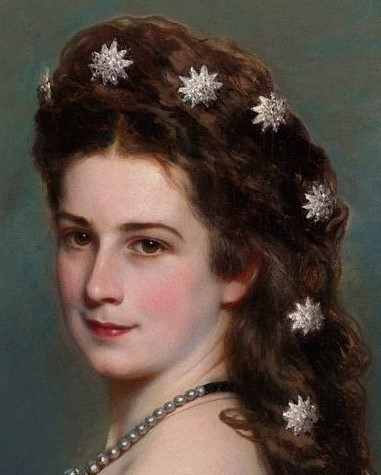
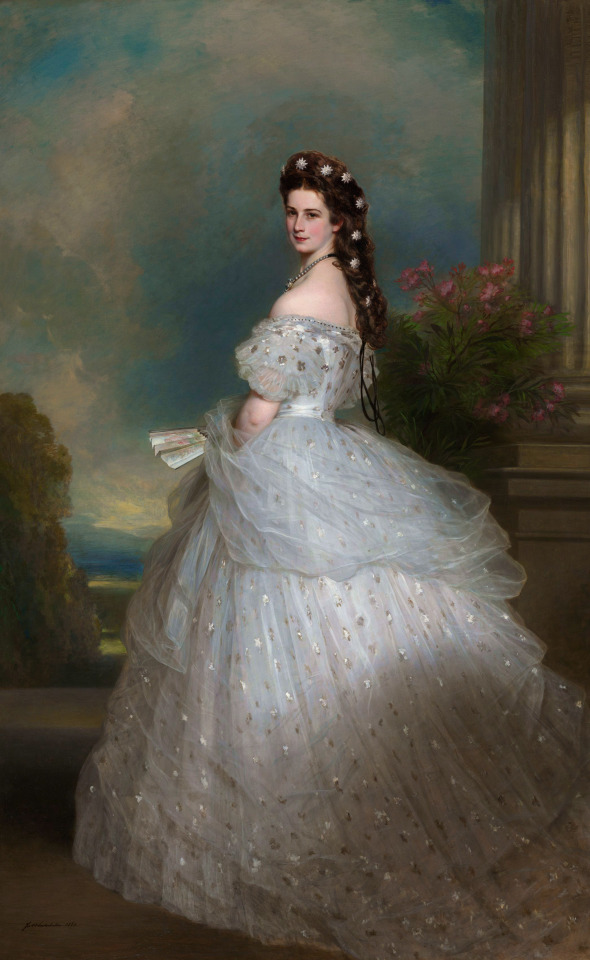

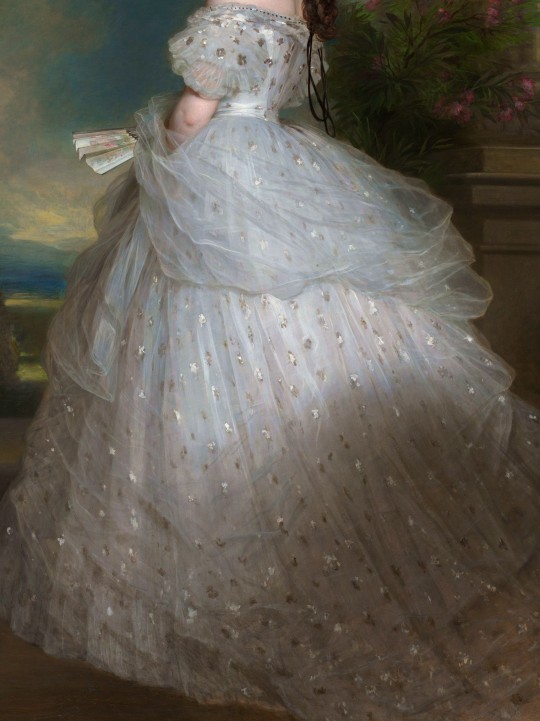
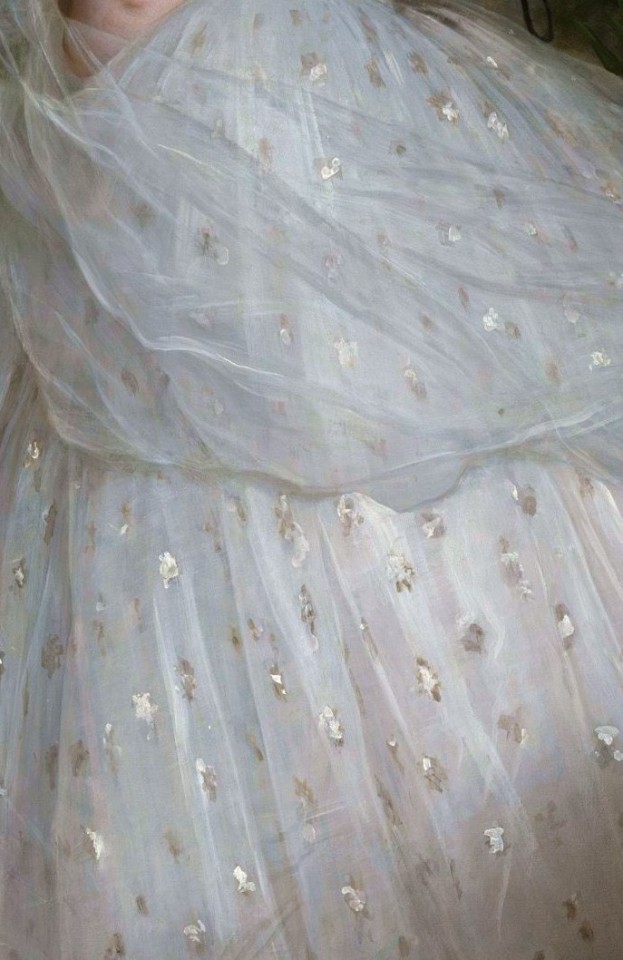
Franz Xaver Winterhalter, Portrait of The Beautiful Empress Elisabeth of Austria nicknamed Sisi (also spelled Sissi) in a pink tulle ballgown (Courtly Gala Dress) with Diamond Stars created by House of Worth. 1865.
Kunsthistorisches Museum in Vienna, Austria.
#1865#painting#sisi#franz xaver winterhalter#Empress Elisabeth of Austria#jean-philippe worth#sissi#pink tulle ballgown#tulle ballgown#ballgown#house of worth#queen of hungary#worth#winterhalter#Hofburg in Vienna#diamond stars#stars#courtly gala dress#my edits#pink tulle#kunsthistorisches museum#details#1860s#the hair#royals#austrian royals#empress elisabet#art#austrian art#austrian painting
120 notes
·
View notes
Text

3 notes
·
View notes
Photo
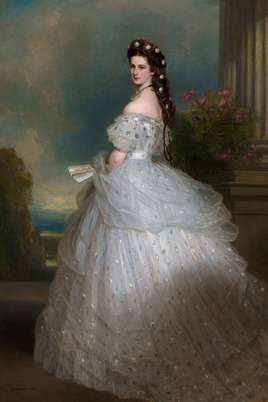





EMPRESS ELISABETH OF AUSTRIA
by Franz Xaver Winterhalter
‘the Empress, as I have often told you before, is a wonder of beauty - tall, beautifully formed, with a profusion of bright brown hair, a low Greek forehead, gentle eyes, very red lips, a sweet smile, a low musical voice, and a manner partly timid, partly gracious.’ John Lothrop Motley, 1864
#empress elisabeth of austria#austria#vienna#HEAR ME OUT#to see this painting in the flesh#was INCREDIBLE#the beauty#the likeness#it is as if she going to move#same goes for the portrait of franz#no wonder everyone wanted to be painted by winterhalter!#his portraits are truly remarquable
642 notes
·
View notes
Text





florence + the machine lyrics x colors x textiles in art – grey/silver
Spectrum – Ceremonials // Portrait of a Lady – Guillaume Voiriot 🪦 Spectrum – Ceremonials // Empress Elisabeth of Austria – Georg Decker after Franz Xaver Winterhalter 🪦 Remain Nameless – Ceremonials // Artemisia Prepares to Drink the Ashes of Her Husband, Mausolus – attributed to Francesco Furini 🪦 Mother – How Big, How Blue, How Beautiful // Portrait of a Lady – Guillaume Voiriot 🪦 Mermaids – Dance Fever // Melancholy – Francesco Hayez
#florence + the machine lyrics x colors x textiles in art#grey#silver#spectrum#remain nameless#mother#mermaids#ceremonials#how big how blue how beautiful#hbhbhb#dance fever#florence + the machine#florence and the machine#fatm#art#art history#lyrics#lyric art
119 notes
·
View notes
Text




nakshatras as art: ashlesha
1."Circe Invidosa" John William Waterhouse
2."Empress Elisabeth of Austria" Franz Xaver Winterhalter
3."Medusa" Carvaggio
4."Empress Theodora" Jean-Joseph Benjamin Constant
#astrology#astro#vedic#astro tumblr#nakshatras#moodboards#ashlesha#cancer#aslesha#aes#rikastrology#nakshatrart
155 notes
·
View notes
Photo

“It is a pity that some of the famous stars used by Empress Elisabeth of Austria in her portrait painted by Franz Xaver Winterhalter remain. It would be cool to see one of her descendants wearing the stars.” - Text & Image Submitted by cenacevedo15
21 notes
·
View notes
Text
The Winterhalter That Wasn't: The Real Authorship of a Portrait of Queen Marie Sophie of the Two Sicilies

Oh, Franz Xaver Winterhalter: THE painter of royals. Born in 1805, the German painter made a career by painting detailed, gorgeous, romantic and flattering-yet-still-accurate portraits through out the courts of Europe. Amongst his royal sitters were Queen Victoria, Empress Eugénie of the French, Empress Maria Alexandrovna of Russia, Queen Isabel II of Spain, Empress Elisabeth of Austria, and many more. Everybody wanted to be painted by Winterhalter, and the painter was in high demand until the end of his life in 1873.
Winterhalter is my favorite portraitist. The sheer amount of detail that he put into the fabrics of the dresses is impressive, as it is the way he enhanced his female sitters and romanticized them while still making them recognizible (non of his male portraits are that impressive, sorry guys).

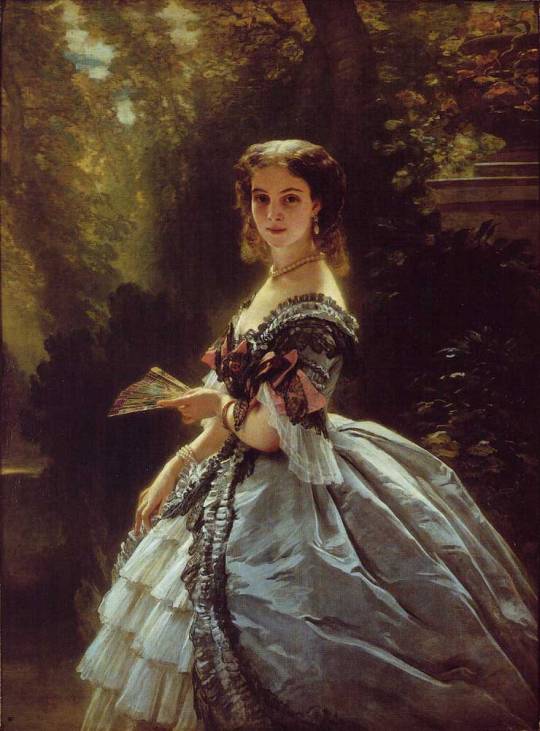

Queen Marie Henriette of the Belgians (1865) // Princess Elizaveta Esperovna Troubetzkaya (1859) // Empress Eugénie surrended by her ladies in waiting (1855). All by Franz Xaver Winterhalter.
So remember how Winterhalter painted Empress Elisabeth of Austria? Well, he also painted her younger sister Marie, the last Queen of the Two Sicilies. Possibly. Maybe. Allegedly. I actually haven't found any evidence of this, but I did read people talking about it on royal discussion forums, and the people there absolutely knows what they are talking about. So it is possible.
Now enters the portrait that compels this post: the alleged portrait of the Queen of the Two Sicilies by Franz Xaver Winterhalter.

Queen Maria Sophia of Naples, attributed to Franz Xaver Winterhalter
So what do we know of this portrait? Not much that I could find. It is listed in Wikimedia Commons as belonging to the Minneapolis Institute of Art, and that it was a "Bequest of the Estate of Miss Marguerite Davis", whom apparently was like a super rich lady from the mid 1900. And as I said before, it has been attributed to Winterhalter.
If you google it you will find it as such in plenty websites and social media posts. But not gonna lie, I always thought that this identification was fishy. Look at the portraits I shared above and then look at this portrait. Does it really look like it was painted by the same guy? The guy known for his detailed idealized portraits? Like were are the textures of the fabrics? The more I looked at the portrait the less it looked like a Winterhalter.
Yesterday I was looking for information for a new post about Marie that I'm writing (also relating an artist) when I came across an article by Anne Brewster called "American Artists in Rome", published in the February 1869 edition of Lippincott's Magazine of Literature, Science and Education. The article, written from Piazza di Spagna in December 1868, had a mention of Marie so of course I had to read it. In it Brewster paints a picture of Rome and its residents from the United States. It was the beginning of the season and artists were filling up the studios; she visited two of them, an sculptor's and a painter's. First the studio of Mr. Mozier, in which she found many of his works such as "Undine" and "Lady of Avenel". Then she moves onto Mr. Buchanan Reid's studio, "at present one of the most attractive in Rome." The main attraction of it, Brewster tells us, is his new portrait of the ex-queen.
You cannot imagine the way my heartbeat raised as she described the portrait and I realized that I freaking knew what she was talking about:
But the principal object of interest just now at Mr. Read’s studio is his unfinished portrait of Maria Sofia, ex-Queen of Naples. Mr. Read has been closely engaged for two weeks at the Farnese Palace, where this beautiful young throneless queen has been sitting to our famous poet-painter, and his subject has inspired him to create a lyric in his picture.
Enough of the portrait is finished to enable us to read the poetic thought. In the background is Vesuvius and a sunset. The sky is beginning to be dotted with stars. The head of the Bavarian Bourbon queen wears no diadem but her own superb hair, which lies in a high mass of ruddy chestnut hue, and in the sky just above this true regal crown of beautiful womanhood is the evening Star.
The ex-queen’s face has tragic points in it, and in some photographs she looks as if she might be a bandit’s wife as well as a Bourbon princess; but Mr. Read has caught these striking features and rather fierce expressions, and with the transmuting power of a poet and artist blended them into deep feeling and thrilling emotion. Her hand is playing with the pearl necklace that encircles her throat, while from the fingers the pendant cross has slipped and rests against the light, filmy drapery of the breast.
The fire in the flashing eyes of the queen is softened down almost into tenderness, and there beams from them a look of something like faith and trust in the future—a watching for the rising of the morning planet.
While looking at the picture we feel so impressed by its expectant expression that we cannot help recalling how many marvelous changes crowned heads have had in our memory, and imagination willingly restores this young Bavarian girl to the throne that slipped away from her just as she stepped upon it as a bride.
I actually yelled "I KNEW IT" when I read this. Here I had my confirmation: that portrait was NOT a Winterhalter. Since the portrait as we know it today looks exactly as it is described by Brewster it seems that Mr. Read never finished it. But who was Mr. Read?
Thomas Buchanan Read was a poet and painter born in Chester, a county of Pennsylvania in 1822. When he was 10 years old he was apprenticed to a tailor, but he ran away to Philadelphia and got a job as a clerck on a grocery store, rolling cigars and painting business signs. After a bunch of comings and goings in which he discovered his abbility for art, at age 18 he met the wealthy Nicholas Longworth, who opened a studio for him. Thus began his career as a painter, which gained him praise. His career as a poet seems to have been much more prolific and praised, with several publications that span for over twenty years. He went to Europe for the first time in 1850, and then again in 1853 until 1858, where he dedicated to the study of art in Florence and Rome. During the American Civil War Read he was a major in the Union Army, but because his weak physical prevented him from joining the battle he put all his strenght in lifting up the morale and recruiting soldiers by giving public readings and reciting his war poems in the camps of the army. He spent his time between Philadelphia and Cincinnati, but during the final years of his life he lived mainly in Rome. In 1872, when he was sailing back to the United States with his family, he caught pneumonia, and by the time they reached New York City he was too weak to continue traveling. He died a week later on May 11 1872 aged 50 years old.
Here are some paintings by Buchanan Read:

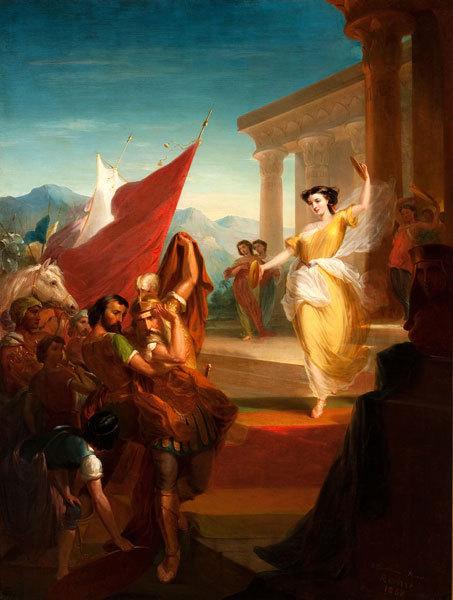

The Harp of Erin (1867) // Jepthah's Daughter (1858) // The Angel Appearing before the Shepherds (1870)
Look at the textures! Look at the colors! Comparing these portraits to Marie's I can say "yeah this was painted by the same guy". Also his thing absolutely was "lady in a translucid white dress", so maybe the portrait is just meant to look Like That.
Last night I was excited about my discovery, but now I'm a bit sad. Read's portrait of Marie is beautiful and memorable, and yet it has been misslabeled as a Winterhalter for years. He deserves the proper credit for his work. I will try to write to the Minneapolis Institute or Art later to see if they a) still have this portrait in their collection and b) if they will correct its authorship. If you see this portrait going around as a Winterhalter, try to correct it. It's time to give this painting back to his author.
Sources for Read's biography: [x] [x]
#this might be my greatest collaboration to the royal portraits enthusiast community#also one of the articles i cited at the end actually mentions that marie was one of read's sitters!#queen marie sophie of the two sicilies#artist: thomas buchanan read#artist: franz xaver winterhalter#thomas buchanan read#franz xaver winterhalter
46 notes
·
View notes
Text


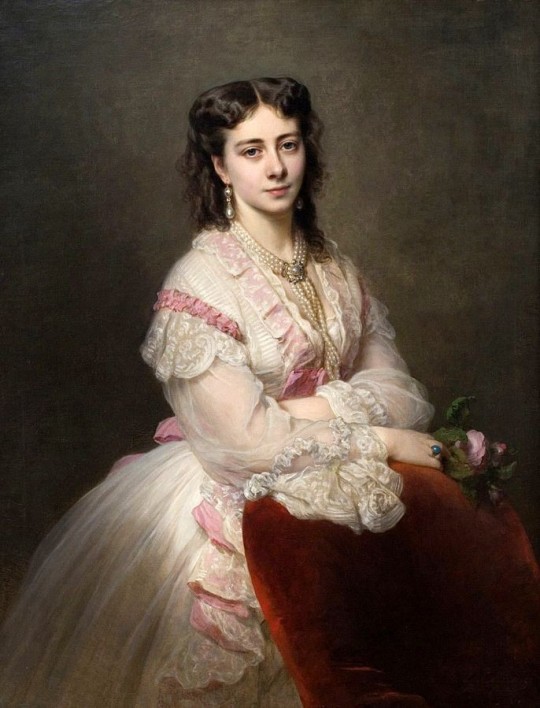

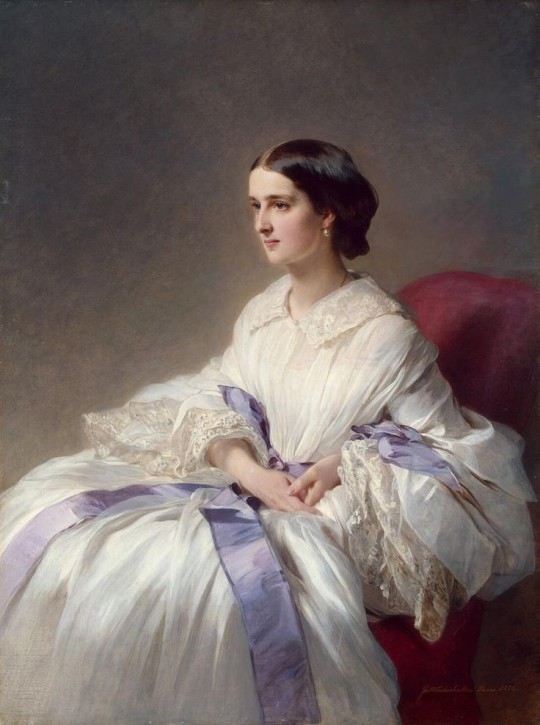



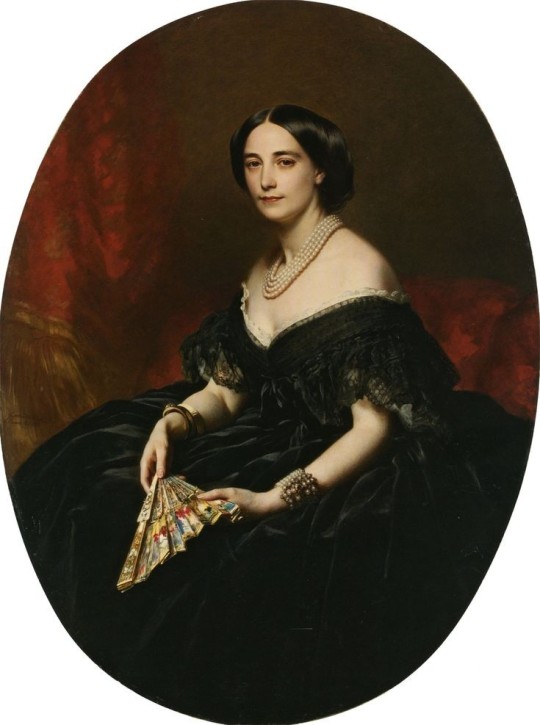

1. 1865 Franz Xaver Winterhalter, Portrait of The Beautiful Empress Elisabeth of Austria nicknamed Sisi (also spelled Sissi) in a pink tulle ballgown (Courtly Gala Dress) with Diamond Stars created by House of Worth.
2. Franz Xaver Winterhalter (1805-1873) “Portrait of Victoria, Princess Royal” (1857) Oil on canvas Currently part of the Royal Collection Trust Victoria, Princess Royal (1840-1901)
3. Franz Xaver Winterhalter (1805-1873) "Portrait of Countess Marie Branicka de Bialacerkiew" (1865) Oil on canvas Located in the Philadelphia Museum of Art
4. Franz Xaver Winterhalter, Countess Alexander Nikolaevitch Lamsdorff, (Maria Ivanova Beck, 1835-1866), 1859
5. Franz Xaver Winterhalter, Countess Olga Shuvalova, 1858. Oil on canvas
6. Franz Xavier Winterhalter (German, 1805 - 1873) Portrait de Wieńczysława Jurjewicz née Barczewska, 1860
7. 1859 Franz Xaver Winterhalter - Grand Duchess Alexandra Iosifovna of Russia
8. Franz Xaver Winterhalter (1805-1873, German) ~ Portrait of Augusta Wichrow, 1848
9. Franz Xavier Winterhalter (German, 1805-1873) Maria Obolenskay, 1850
10. Franz Xavier Winterhalter (German, 1805 - 1873) Portrait of Countess Sophia Bobrinskaya (1823–1903), 1857
4 notes
·
View notes
Text

Title: Empress Elisabeth of Austria
Artist: Franz Xaver Winterhalter
Date: 1865
Genre: Portrait
10 notes
·
View notes
Photo
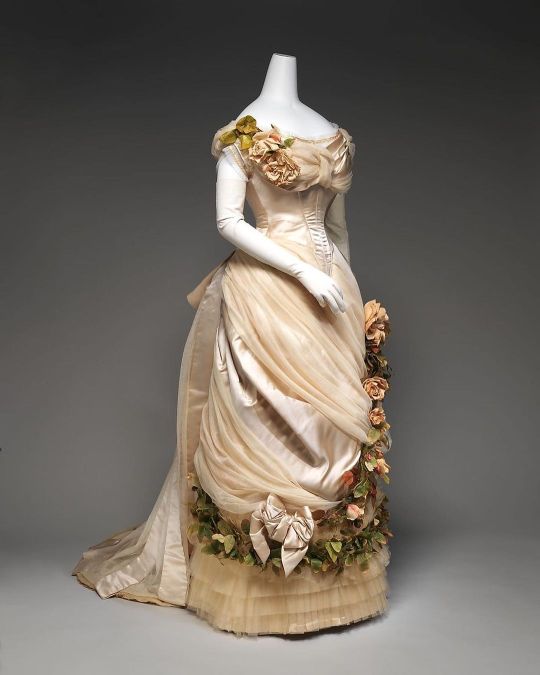
Today I’d like to highlight some of the incredible gowns created by the House of Worth. Charles Frederick Worth is known to many as the father of haute-couture. He (and later his son, Jean-Philippe Worth), designed gowns for royalty and the most wealthy women of the 19th and early 20th centuries. These images are just a few of my many, many favorite Worth gowns. Which of these is your favorite? Let me know in the comments! Images: 1. Evening dress, ca. 1882. Image from the Metropolitan Museum of Art. 2. Ball gown, 1898. Image from the Metropolitan Museum of Art. 3. Ensemble, 1862-1865. Image from the Metropolitan Museum of Art. 4. Evening dress, 1898-1900. Image from the Metropolitan Museum of Art. 5. Ensemble, ca. 1865-1867. Image from antiquetrader.com. Dress located in the Kent State University Museum. 6. Ball gown, 1900. Image from the Metropolitan Museum of Art. 7. Dinner dress, ca. 1877. Image from the Metropolitan Museum of Art. 8. Evening dress, 1893-1895. Image from the Metropolitan Museum of Art. 9. Ball gown, 1887. Image from the Metropolitan Museum of Art. 10. Portrait Empress Elisabeth (Sissi) of Austria in a gown believed to be by Worth, 1865. Painted by Franz Xaver Winterhalter. Image found on the Fashion Institute of Technology website. https://www.instagram.com/p/CfK54DTrm9v/?igshid=NGJjMDIxMWI=
3 notes
·
View notes
Text
1873-Franz Xaver Winterhalter

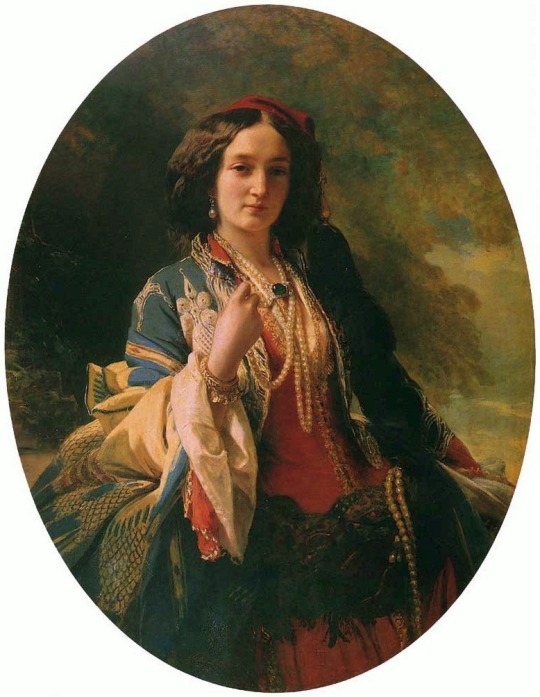

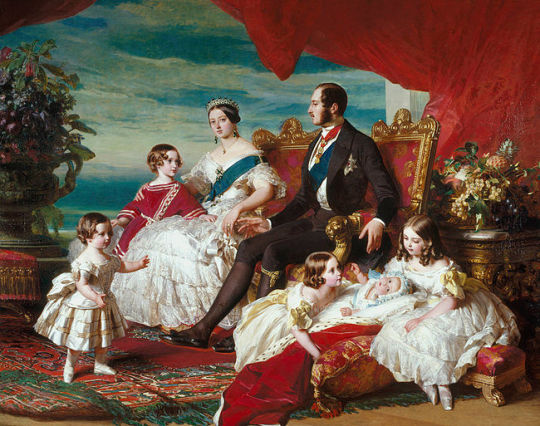

Franz Xaver Winterhalter (20 April 1805 – 8 July 1873) was a German painter and lithographer, known for his flattering portraits of royalty and upper-class society in the mid-19th century. His name has become associated with fashionable court portraiture. Among his best known works are Empress Eugénie Surrounded by her Ladies in Waiting (1855) and the portraits he made of Empress Elisabeth of Austria (1865).
1 note
·
View note
Text

Dettagli in bianco, quale preferite? in senso orario:
1 Empress Elisabeth of Austria, 1865, Franz Xaver Winterhalter
2 An Elegant Bouquet, 1886, Gustav Jean Jacquet
3 Pea Blossoms, 1890, Edward Poynter
4 Princess Alexandra of Wales, 1863, Richard Lauchert
0 notes
Text
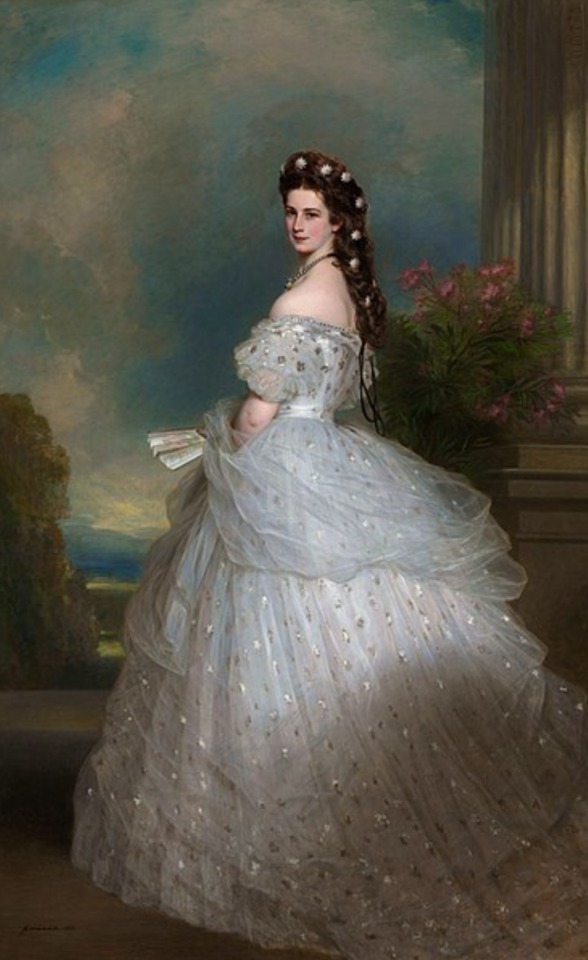
#imperatrice elisabetta d'austria in abito da ballo#franz xaver winterhalter#empress elisabeth of austria
1 note
·
View note
Photo
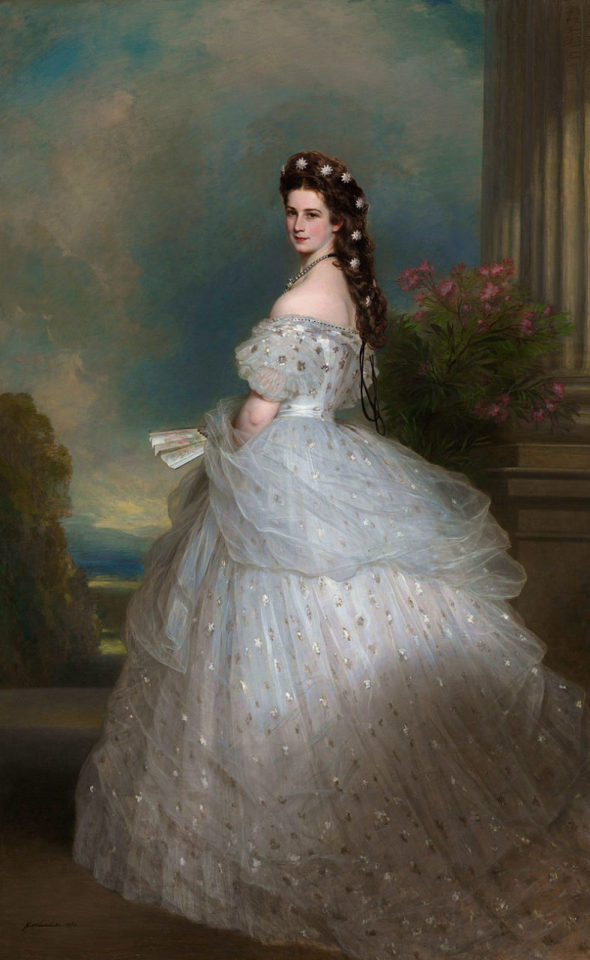
Portrait of Empress Elisabeth of Austria, Franz Xaver Winterhalter, 1865
0 notes
Text

Portrait of Elisabeth depicting her long hair (by Franz Xaver Winterhalter, 1864), one of two so-called "intimate" portraits of the empress; although its existence was kept a secret from the general public, it was the emperor's favourite portrait of her and kept opposite his desk in his private study.
Elisabeth practiced demanding beauty routines. Daily care of her abundant and extremely long hair, which in time turned from the dark blonde of her youth to chestnut brunette, took at least three hours. Her hair was so long and heavy that she often complained that the weight of the elaborate double braids and pins gave her headaches. Her hairdresser, Franziska Feifalik, was originally a stage hairdresser at the Wiener Burgtheater.
Elisabeth used these captive hours during grooming to learn languages; she spoke fluent English and French, and added modern Greek to her Hungarian studies. Her Greek tutor, Constantin Christomanos, described the ritual:
Hairdressing takes almost two hours, she said, and while my hair is busy, my mind stays idle. I am afraid that my mind escapes through the hair and onto the fingers of my hairdresser. Hence my headache afterwards. The Empress sat at a table which was moved to the middle of the room and covered with a white cloth. She was shrouded in a white, laced peignoir, her hair, unfastened and reaching to the floor, enfolded her entire body.
#the royal diaries#empress elisabeth of austria#empress sissi#Franz Xaver Winterhalter#beauty regime#Elisabeth: The Princess Bride
86 notes
·
View notes
Text

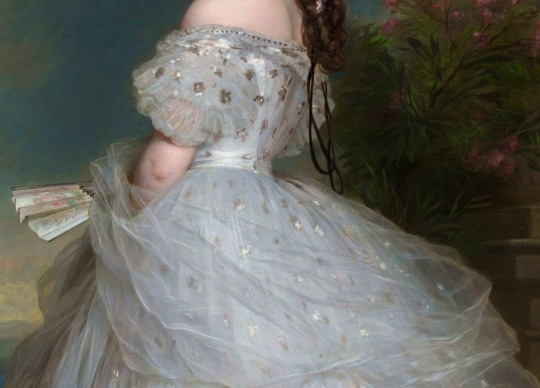
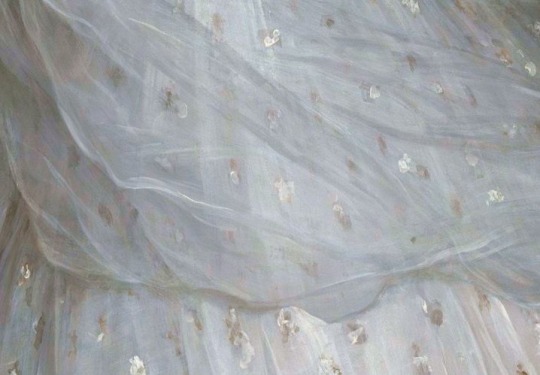
Empress Elisabeth of Austria in Courtly Gala Dress with Diamond Stars, by Franz Xaver, 1865.
#empress elisabeth of austria#diamond#franz xaver winterhalter#1860s art#1860s#painting#fine art#old art
61 notes
·
View notes